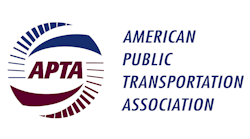Buses are a pivotal form of transportation, providing millions of Americans convenient, cost-effective access to work, schools or other locations around the city. According to the American Public Transportation Association (APTA), public transportation ridership is up more than 30 percent since 1996, and 50 percent of all public transit trips occur by bus — a testament to the economic and social benefits to taking a bus. As with any mode of transportation, safety is paramount. Since the advent of technology, the frequency of bus crashes has gone down significantly. However, APTA notes there were still 264 fatalities and millions of dollars’ worth of damages as a result of bus crashes in 2016 (the latest date for which statistics are available). In order to ensure the safe operation of this popular form of public transit, a growing number of transit agencies have adopted video-based safety, an increasingly popular advanced technology with measurable benefits in the transit space.
Video-based safety zeroes in on risky behavior
With traffic congestion becoming more and more problematic in communities across the country, the risks to public transit vehicles, drivers and passengers grows. Bus fleets face an unusual set of risk factors, as they often operate in crowded city centers or pedestrian-filled suburban neighborhoods.
“Risk has increased for bus fleets everywhere, as traffic populations become more and more dense, particularly in urban areas,” stated Todd Cheever, safety director of Nassau Inter-County Express (NICE), a Transdev-operated fleet.
“In large cities, bus operators are extremely susceptible to unsafe following distances,” said Cheever. “It’s virtually impossible for operators to leave adequate space between their vehicles and the next vehicle, as this cushion often gets taken up immediately by reckless drivers trying to gain every inch of room in traffic.”
As buses often lack seat belts, injuries frequently result from constant and abrupt stopping and starting due to heavy traffic. Meanwhile, paratransit operators who frequent suburban neighborhoods are more likely to roll stops signs. This, of course, not only endangers the pedestrians and vehicles sharing the roadways, but is dangerous to the occupants in the bus.
Additionally, driver distraction is an increasing problem in the bus transit space. With a myriad of technologies in the bus and on the roadways, it’s often difficult for drivers to remain focused on the road. Cellphones, infotainment systems, voice command features and even dispatcher communications can all cause operators to be distracted — and it only takes one second of distraction to endanger passenger lives.
Video technology can help agencies by giving insight into the riskiest driving behaviors, like rolling stop signs, unsafe following distances and near-miss traffic incidents. It also allows fleet managers an opportunity to identify and improve their operators’ most dangerous driving habits. Once a recording triggers an event, the video is offloaded, reviewed and scored. Fleet managers then can focus their time on the drivers and identifying the types of behaviors and events that require the most coaching. All operators have their own unique strengths and weaknesses, and managers can utilize video-based safety to identify the behaviors that need coaching so as to avoid costly, dangerous incidents before they occur.
Furthermore, video-based safety can help ensure agencies comply with the Safety Management Systems (SMS) approach, the new safety regulatory framework from the Federal Transit Administration (FTA). As part of the SMS approach, the Public Transportation Agency Safety Plan (PTASP) Final Rule requires some operators of public transportation systems that receive federal funds to formulate plans that include the processes and procedures necessary for implementing SMS. Video-based safety programs can ensure that these transportation organizations are compliant with the framework, and are following the requisite protocols to stay SMS compliant.
Exonerating operators when they’re not at fault
Often in a crash involving a bus (or any large vehicle), the operator is the first to be blamed. When the “blame game” escalates to “he said, she said,” it’s not unlikely for fault to be assigned to the operator, whether this is where responsibility actually lies or not. According to Cheever, the problem is exacerbated by a lack of witness testimony. “Testimony is difficult because people who are witnesses to an accident often have busy schedules and things to do, so getting someone to stick around to help sort out the mess can be extremely difficult.”
A video-based safety program can solve this issue of blame. Captured video footage provides precise and unbiased evidence that shows what actually happened. In instances where video footage is available, operators are more likely to be exonerated when they are not at fault in a collision. Cheever mentioned that in multiple instances his operators have been exonerated as a result of the company’s video-based safety system.
These exonerations not only protect the operator and his or her livelihood, but it saves the agency from expensive legal settlements. In those instances when the operator is at fault, video allows fleet management to recognize the facts early, speeding claim resolution and saving time and money. Avoiding tedious and costly legal battles is a significant benefit cited by many transit agencies.
Additionally, Cheever noted that his video-based system has helped manage insurance premiums. “Anytime you can implement an accident prevention system, it will drastically cut down the cost you pay, and, coupled with exonerating operators not at fault, this can save millions of dollars a year.”
With video-based safety solutions, fleet managers can focus on what’s important — helping the aggrieved parties and ensuring that their operators learn from any mistakes made.
Managed service program
Transit agencies are often sizable and complex operations with buses running 24/7 across large cities. The task of monitoring and deciphering all of the insight that comes with a video-based program can seem insurmountable. It’s imperative that agencies use a managed services program that can take the burden off the fleet safety or operations manager, so they can turn more attention toward operating their fleets and training their operators effectively.
A managed service program alleviates the operator or fleet manager from the tedious task of reviewing video footage and analyzing the data, while offering consistent and unbiased insight into risk. As a result, agencies maximize the value of their video safety investment and operators benefit from a program they can trust. The real-time stream of analyzed data is based on triggering events, observed behaviors, and risk exposure metrics, painting a complete picture of driving behavior for each operator and the fleet as a whole. Fleet managers are able to quickly discern the most pressing areas for improvement, and focus their time on the most valuable action: coaching.
“It’s important to put in a good coaching system — one that focuses on the needs of the operators and is designed to improve operator habits for the sake of safety, not just chastising the mistakes,” said Cheever. NICE’s fleet has seen widespread improvement after the implementation of its video-based system with a managed services program, from young operators just learning the ropes to seasoned veterans who are working to break long-held habits.
Agencies across the country are opening their eyes to the full advantages that a video-based safety program can provide. The advantages of unbiased analysis, increased exoneration, cost-saving measures and most importantly, a safer roadway, underscore the importance of video.
Jason Palmer is the chief operating officer at SmartDrive Systems Inc.





